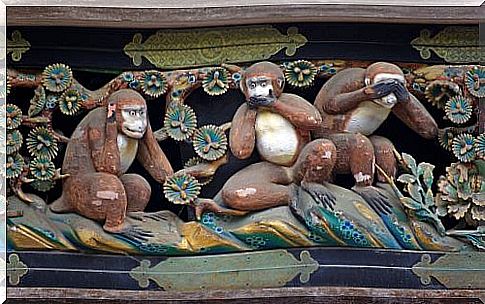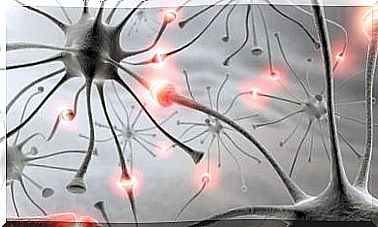The Teaching Of The Three Monkeys As Food For Thought

The traditional motto of the “three wise monkeys” of the Toshogu shrine contains a simple teaching, always valid: we must pay attention to what we say, hear and see.
The sanctuary is located in Japan and the sculpture representing the three monkeys (one covers the mouth, the other the eyes and the third the ears) dates back to 1636.
Few images have crossed so many frontiers and centuries to reach us intact, with the strength of a symbol.
As always happens with icons, it often deviates from the original meaning to mix it with other concepts or interpretations that stray from the original root.
For the Japanese, for example, the three monkeys refer to a philosophical and conduct code that exalts the need to be cautious: “do not see evil, do not listen to evil, do not speak of evil”.
It is a maxim that comes from the writings of Confucius and which, to many, almost offers an idea of ”resignation”.
Others, however, see in the image of the three monkeys points of contact with the proof of the “three filters” attributed to Socrates.
In this way, the three monkeys convey a message more suited to modern life, further away from the ancient Eastern servility, from an era in which people were encouraged to surrender to the system, with the advice not to see and not to listen to injustices. .
The three filters of Socrates
To understand the similarity between the three wise monkeys and the three filters of Socrates, it is interesting to know first of all the lesson that the Athenian philosopher wanted to impart to a man who had come to his house to criticize a pupil.
Before the man, in the grip of agitation, opened his mouth, Socrates asked him three questions, the three “filters” on which he should have thought before speaking.
- Truth Filter: Is What You Are About to Say True? Have you checked with care, attention and measure that everything you say is true?
- Filter on goodness: is what you are going to say good?
- Filter of necessity: is what you are going to say indispensable? Do I absolutely have to know?
These three filters can be taken as a guide; they teach us to be more careful and demanding with ourselves every time we speak.
Many find there points of contact with the maxim of the three wise Japanese monkeys.
The teaching of the three wise monkeys

The monkey that covers its mouth: Iwazaru
Iwazaru is the monkey on our left. For Japanese philosophy, this figure represents the need not to report evil; sometimes it is related to the advice not to express one’s discomfort or dissatisfaction aloud.
The virtue of prudence can also be interpreted as an invitation not to expose one’s emotional world too much, to measure and, above all, to modesty.
On the other hand, recalling Socrates’ filters, the figure of Iwazaru has a lot to do with the golden rule of not spreading gossip.
They are often not true, they are not good, and there is no practical need to express them aloud.
The monkey that plugs its ears: Kikazaru

Kikazaru is the little monkey in the center that plugs its ears. In Japan, people who have a habit of spreading criticism, rumors and negative news are viewed with great severity.
Hence the choice to plug your ears so as not to hear certain news in order to preserve your balance.
This traditional idea clashes with the Western world where negative news, gossip and criticism are a common and omnipresent element.
If we cross this idea with Socrates’ three filters, we realize that:
- Bad news should only be conveyed when it is useful; for example, I inform you that your customers are not satisfied so that you try to improve.
- If the information is not useful or even harmful, it is best to follow Kikazaru’s lesson: let’s shut our ears.
The monkey who covers his eyes: Mizaru

According to the holy philosophical and moral code, in the face of an injustice it is better not to see, not to hear or not to speak. This idea is not applicable in reality, we know.
However, if we focus on the image of the third monkey from a Socratic point of view, we realize that it is an invitation to close our eyes to what is not needed, which is neither useful nor good.
Close your eyes to the darkness to lift your gaze to the bright, hopeful and valuable side of life.
In conclusion, the teaching of the three monkeys speaks of our true needs and invites us to always be cautious and prudent.
“Check your words; stop your ears in the face of what is useless or does not help; cover your eyes in the face of what harms you : seek only what makes you happy ”.









